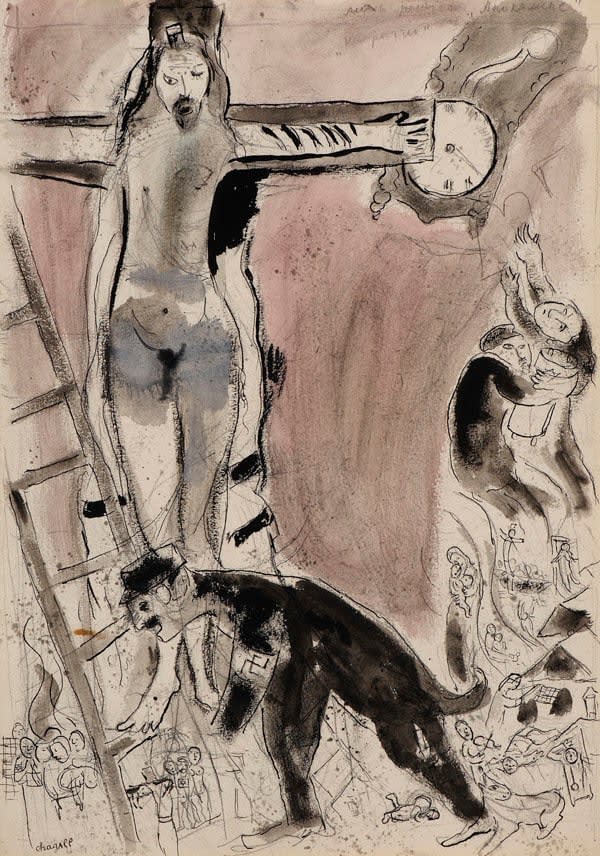Apocalypse en Lilas, Capriccio
Artist Marc Chagall
Accession number 2009-40
Sarah MacDougall writes that: “This gouache, ink and pencil study in lilac and grey was executed in April 1945 by Chagall after almost four years in exile in New York. He had fled to the US after the Nazi occupation of France during the Second World War.
This was probably the first work that Chagall produced after coming out of mourning for Bella, who had died suddenly in September 1944 after almost 30 years of marriage. It was created in response to seeing the horrors of the concentration camps revealed through newspapers and Pathé newsreels.”
Chagall’s biographer Jackie Wullschläger has described this study as “the bleakest of Chagall's many crucifixions”: combining symbolism with realism and incorporating factual information about the Holocaust for the first time.
MacDougall describes the symbolism found within the image: “The grandfather clock (a frequent Chagall motif) is missing its minute and hour hands, casting this moment in history as the end of time – the apocalypse. The naked figure of Christ wearing phylacteries on his head and arm and a flowing prayer shawl behind is clearly identified as a Jew, but also combines male and female attributes in a hermaphrodite figure symbolising both the male and female victims of the Holocaust. A bestial Nazi crouches at the foot of the cross. Below, a series of complex and horrific scenes uncover the extent of Jewish suffering during the Holocaust, among them another crucifixion, a hanging, skeletal camp victims amid burned buildings, and a boatload of refugees.”
Chagall developed a new narrative by combining Christian iconography with Jewish symbols and stylizing Christ as a Jewish martyr. David Lyle Jeffrey has noted that, for Chagall, “Jesus on the cross represented the painful predicament of all Jews, harried, branded, and violently victimized in an apparently God-forsaken world” (D.L. Jeffrey, ‘The Christ of Marc Chagall: Explaining the Jewish and Christian Symbolism in Chagall’s Work’, ‘First Things’, 2014). In this way, and as one of the best-known Jewish artists of the time, Monica Bohm-Duchen suggests Chagall, by his example, “legitimated, validated, and prompted quite a lot of other younger artists of Jewish origin” who then addressed the experience of persecution in similar ways.
























